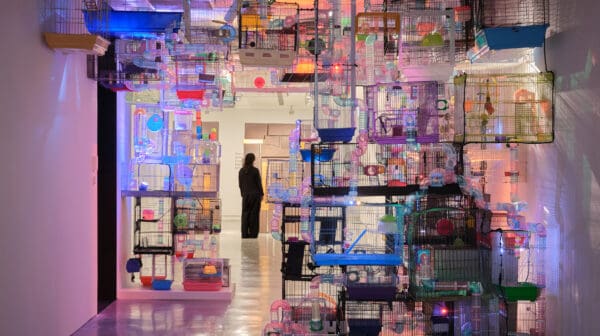
Material curiosities: Primavera 2025
In its 34th year, Primavera—the Museum of Contemporary Art Australia’s annual survey of Australian artists 35 and under—might be about to age out of itself, but with age it seems, comes wisdom and perspective.
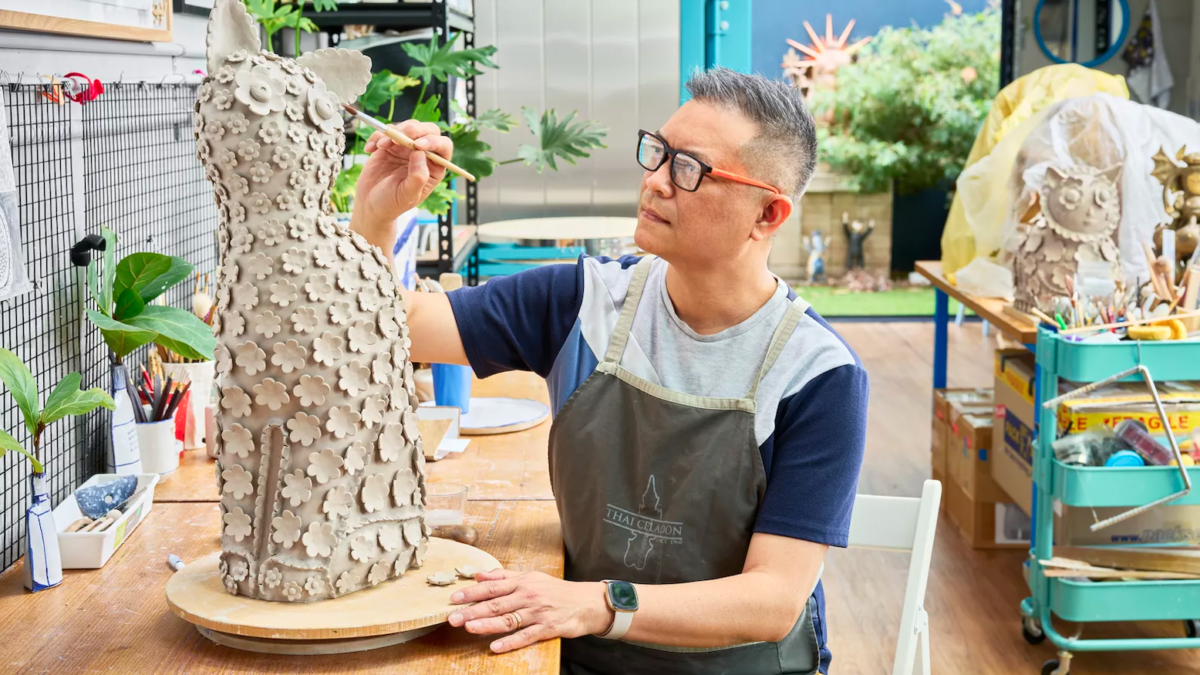

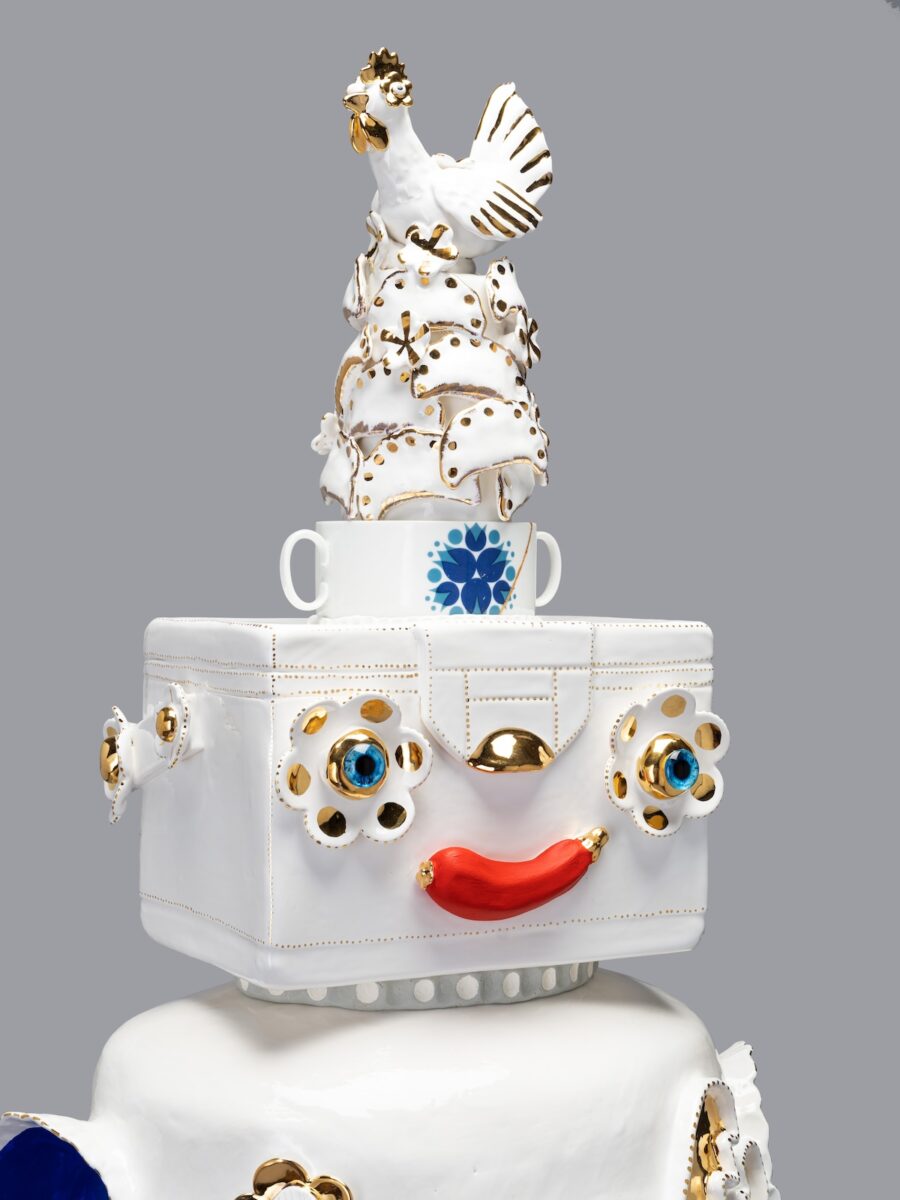


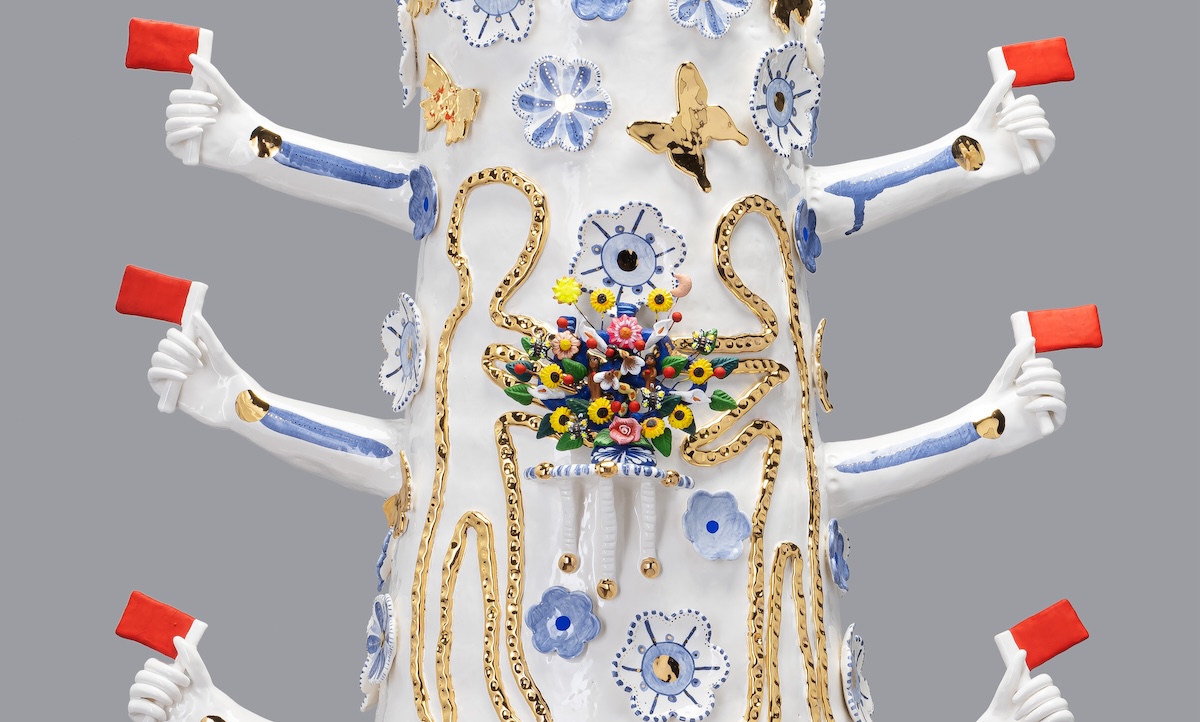

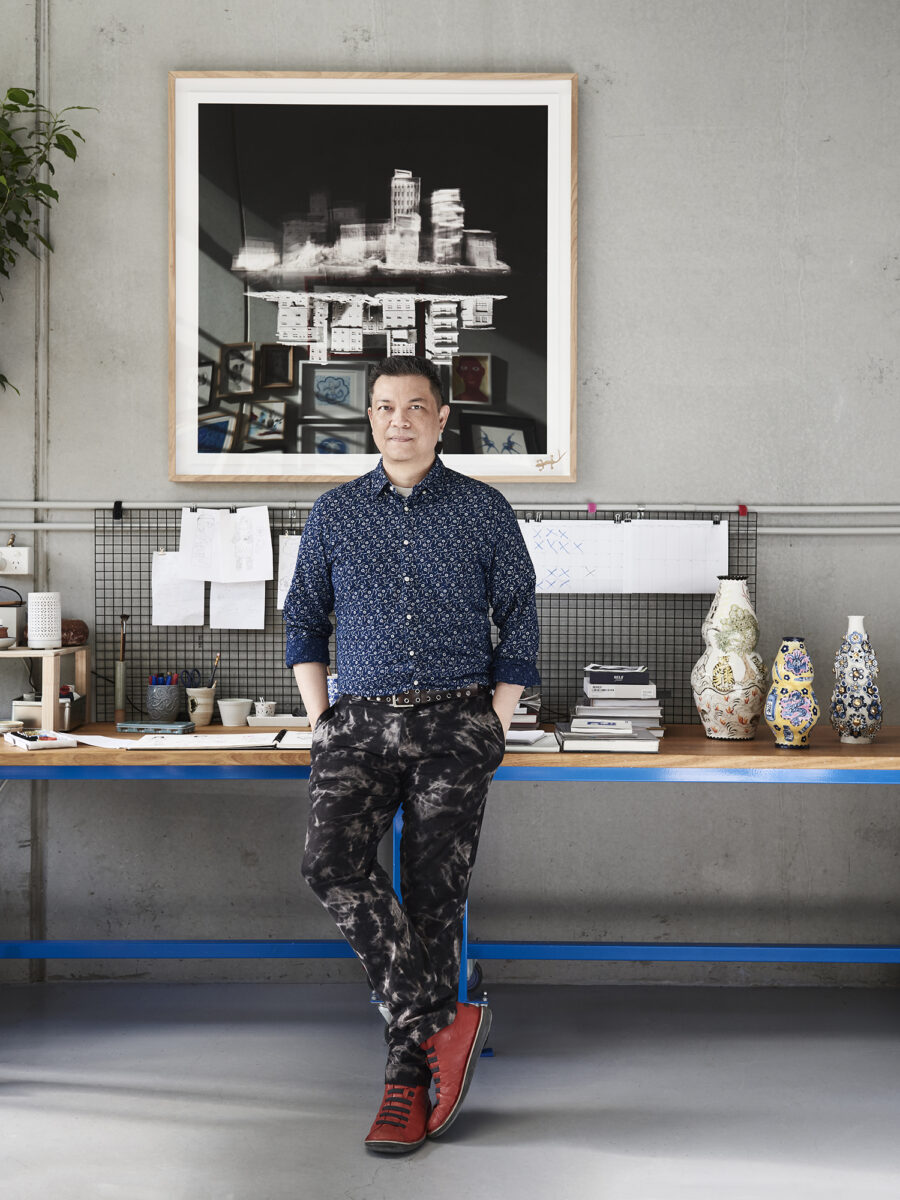
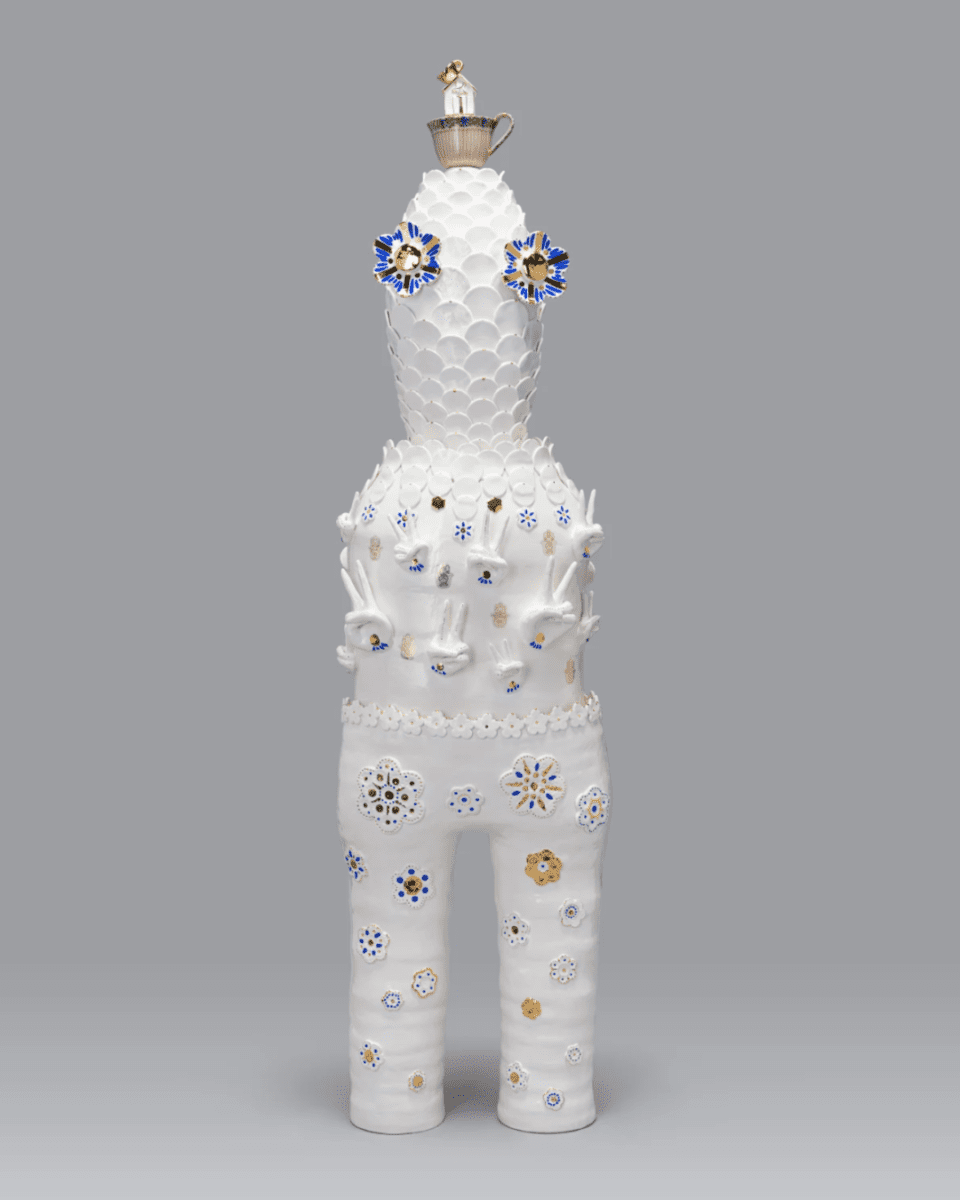
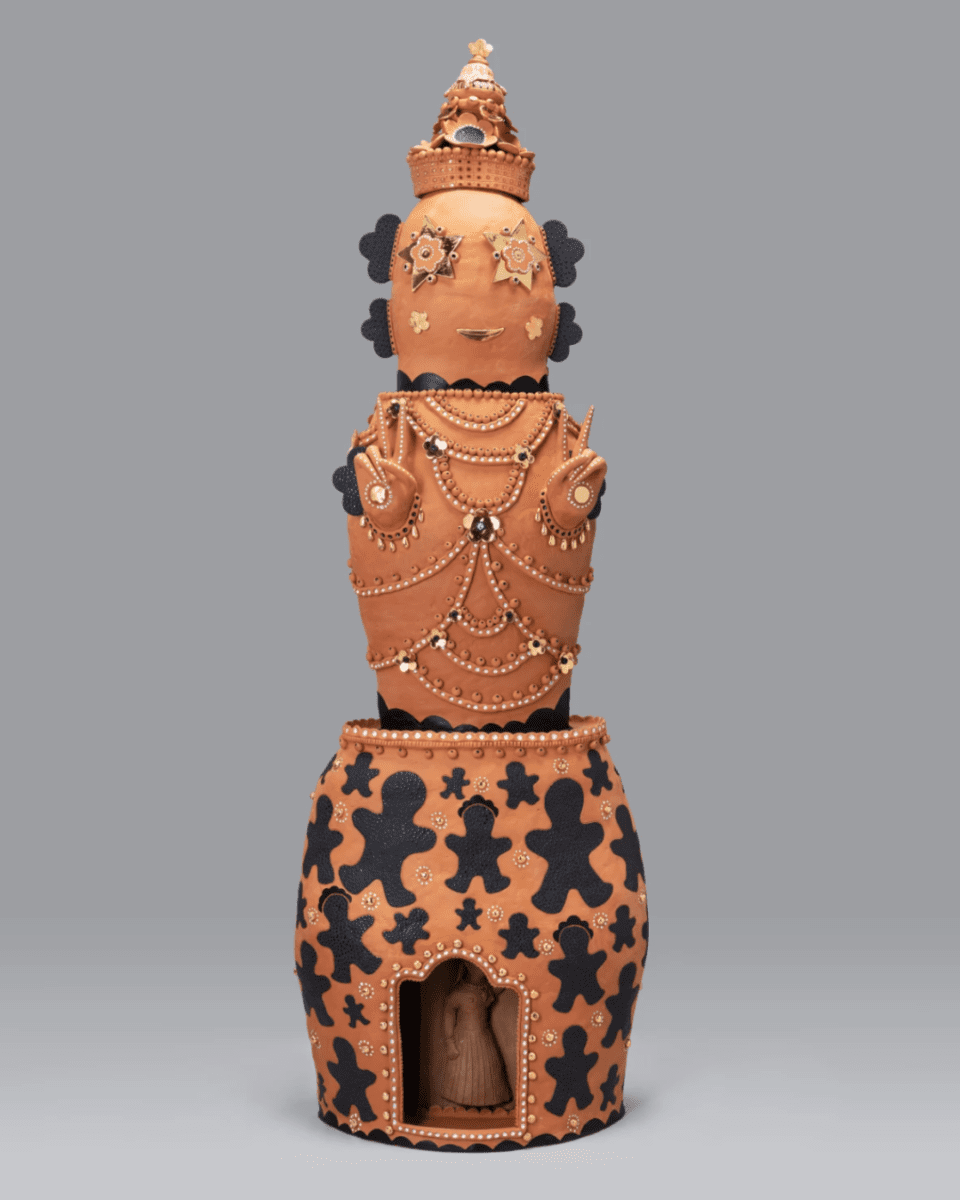

Vipoo Srivilasa is a Melbourne-based, Thai-born Australian artist whose ceramic artworks emanate a sense of positivity, playfulness and joy. With their welcoming attitudes, his ceramic figures reflect the artist’s experience of being both Australian and Thai. Often covered in flowers and embellished with gold, his porcelain works make something beautiful and precious from a lump of clay.
In an interview with fellow ceramicist Sassy Park, he discusses his early introduction to the medium through—of all things—bread, curating the Australian-Asian ceramic exhibition Generation Clay, and his upcoming project re/JOY.
Sassy Park: First of all, I was wondering how you started working with clay?
Vipoo Srivilasa: I was in high school in Bangkok and I wanted to make fashion accessories from air-dry clay but there was no air-dry clay in Thailand back then! You had to make it yourself, so I used dried white bread, made it into powder, and then mixed it with PVC glue, kneaded it, really massaged it until it became like a clay texture. Then I used it to sculpt earrings and necklaces. It was very light and once it dried completely and was completely hard, I could paint and shellac it. After about three months of selling these, a client called me and said, ‘I really like your earrings, but so do my cockroaches! Because it is made of bread, they come and eat it!’ I had to find a new material and I thought ceramic would be a good choice to replace the air-dry clay, because it has a similar texture and quality. So, I enrolled in university and studied ceramics. I completely forgot that ceramics are a lot heavier than dried bread so I couldn’t make what I made before. That’s the story and I’ve never looked back.
SP: That’s a great origin story. I love any crossover with clay and bread! I was looking at your website and saw the title of your show from 2013, How to make a Million before dinner. (Laughs) So I was wondering how is that going for you? Have you made a million from ceramics yet?
VS: Oh, it depends on what currency you are talking about? (Laughs) But yeah, I’ve been making a lot of money lately.
SP: There has been a hierarchy in the art world where ceramics have been on a lower rung.
VS: I think nowadays ceramics are not badly priced. Not bad at all. Some of my work costs more than paintings.
SP: Yes, the Australian public’s interest in ceramics and its value as an art form is really growing.
VS: Zhu Ohmu is another ceramic artist commanding high prices. She makes basket-like sculptures out of coiled clay which are highly sought after.
SP: Zhu Ohmu is one of the artists in your curated exhibition at Bunjil Place, Generation Clay: Reimagining Asian Heritage. You have selected a group of emerging and established artists with Asian/Australian heritage and say this is the first time such a group has shown together?
VS: Yeah, I think so! Since living in Australia for the past 30 years, I have never seen anyone put together an Australian-Asian ceramic exhibition before.
SP: The exhibition has a strong theme of blue and white, which has many layers.
VS: The 14 artists I curated in the exhibition all create different styles of ceramics. Visually the show had to sit together as a whole, so asking the artists to make work in blue and white does that. Blue and white ceramics exist in a lot of cultures around the world, from Islamic, to Asian, to European. Everybody understands blue and white ceramics, and everyone has a perception of what blue and white culture looks like. However, these pieces historically were copied from each other along with the trade of cobalt blue itself. This cultural borrowing is something that I am really interested in. It is a cultural mingling which is also the experience of these artists who have Asian heritage but choose to live and work in Australia. People who come to this exhibition with an idea of Asian ceramics, for example they might think of a jar with a chinoiserie pattern, may be surprised to discover a new type of blue and white ceramic they have never seen before. That is why the title is Reimagining Asian Heritage.
As well, my work is always blue and white, so it’s kind of like a little bit of me in the show.
SP: Right, because you’re not in the show! The colour is also a unifying feature of the exhibition’s design.
VS: The whole gallery is wrapped in a painted landscape of gradients of blue with mountains fading away in lighter shades. The ceramic works pop on the dark blue foreground making it feel like you are immersed in the exhibition, not just looking at it. I worked with the Asian diaspora on the exhibition design for the construction and writing. The works, along with the participatory nature of the exhibition, is something that I’m very proud of.
SP: The participatory nature of the exhibition is something you seem to really enjoy too.
VS: Yes, instead of making work just to look at, I asked the artists how they can engage the audience. A few of the artists took up the challenge, such as Yen Yen Lo. She made these beautiful vases that relate to the passing of her mother. As well, she created tree branches with no leaves or flowers and then she asked people to make cherry blossom flowers which they then stuck on to the branches. There were two bare trees but within a week those trees filled up with flowers. It turned into a forest because it was so popular. People were really engaged.
Another collaborative work is by Nani Puspasari who made a huge tiger jar based on a piggy bank but instead of money, she would ask visitors to come and write down their secret and put it in the bank. Between the whole show we have three different activities for people to enjoy. Each month is a different collaborative work from an artist.
SP: Tell us what’s coming up. You’ve got a book launch and exhibition at the Australian Design Centre.
VS: Yeah, the ADC is a big commission. I received a grant from Creative Australia and created the project re/JOY, which includes the exhibition, an artist monograph, digital materials and public programs which will also tour to regional venues. Basically, I asked Australians who were born overseas to donate a broken ceramic object brought with them from their home country. They don’t know what to do with them. They can’t throw it away because it is meaningful to them, but they can’t repair or fix it because they don’t know how to, or they don’t want to. Through these objects, I find the story about it and find a story about the person who moved to Australia; why they moved to Australia, and how they feel about Australia. Most of the time, when you talk about immigration there is already a perception of how immigrants are going to look, what kind of person they are or what class they belong to. For re/JOY, I picked seven participants from different backgrounds, coming from Europe, Asia, and other places around the world. This project gives them a platform to talk about their stories that we don’t often hear.
SP: Different to the mainstream media?
VS: Right. So that’s the idea of it. I get these broken objects, I find out about the owner’s story and connection to this object that has traveled on the immigration journey, then I create a whole new body of work using one of their objects as a starting point and incorporating that object into my piece. There are seven new works in this exhibition which are also around 1.5 metres tall—the biggest ones I’ve ever made.
re/JOY
Vipoo Srivilasa
Jamfactory Seppeltsfield
8 March -— 22 June 2025
The exhibition will tour Australia from 2025 to 2027 with ADC On Tour, Australian Design Centre’s national exhibition touring program, supported by regional gallery partners.
Tasmanian Museum and Art Gallery, TAS 11 July– 24 August 2025
Geelong Gallery, VIC 6 September – 2 November 2025
Tweed Art Gallery, NSW 14 November – 8 February 2026
Shoalhaven Regional Art Gallery, NSW 21 February – 2 May 2026
Casula Powerhouse Arts Centre, NSW 17 July – August 2026
Rockhampton Museum of Art, QLD 19 September – 15 November 2026
Cairns Art Gallery, QLD 28 November – 7 February 2027
